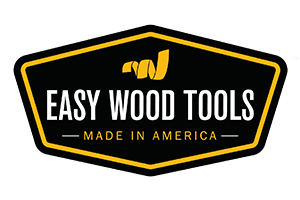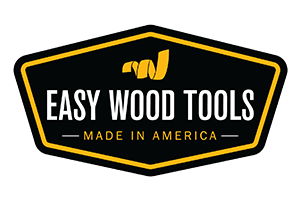Woodturning Back to Basics
This project is a great basic project, so it’s a good idea to use it to brush up on your technique. And before you touch the lathe, it’s a very good idea to make sure your tools are sharp.
For my own sharpening, I use a slow-speed grinder. Slow-speed grinders turn at 1725 RPM instead of the standard 3,600 RPM of most induction motors. The slower speed gives you more control and decreases the risk of overheating your tools and ruining the temper. Once steel goes above its tempering point, it won’t hold an edge any longer — it’s toast.
Strictly speaking, you don’t need a sharpening jig, but it’s a very good idea. They save time by setting the correct bevel angle from the get-go, removing most of the guesswork. They also encourage you to use the grinder more often, giving you sharper tools. If sharpening is a pain, you’re less likely to do it, and dull tools lead to poor work.
When it comes to the actual turning, be aware of rough cuts versus finishing cuts. A rough cut removes stock more quickly, but leaves a poor surface finish. Finishing cuts can use the same tools, but you move more slowly and more deliberately to ensure a smooth, clean finish.
Then comes sanding. I’ve been using Abranet mesh sandpaper, which I enjoy because it doesn’t clog while you’re dry sanding. It also does well when sanding with oil and wax, as I tend to do.
The project itself is a simple handle with a 7/16” hole drilled in one end. The seam ripper itself is attached with CA glue. That’s all. But while you’re making it, be sure to practice your basic techniques, sharpen your tools, and be safe.
Thanks for watching! If you have project suggestions for the Back to Basics series, please let me know in the comments. I’d love to know what you think.





